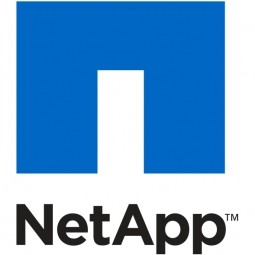下载PDF
Energija Plus Enhances IT and SAP HANA Services with Unistar PRO.cloud Supported by NetApp

技术
- 基础设施即服务 (IaaS) - 云计算
- 基础设施即服务 (IaaS) - 混合云
适用行业
- 服装
- 金融与保险
适用功能
- 维护
用例
- 库存管理
服务
- 云规划/设计/实施服务
- 系统集成
挑战
促进客户访问云
Unistar LC 不断调整其业务以满足客户需求、利用行业趋势并扩大其市场足迹。自从转向以解决方案为中心的业务以来,Unistar LC 已经推出了 10 多个品牌,包括用于托管和托管 IT 服务的 Unistar PRO.cloud。
然而,为了增加这一产品,供应商需要一个可扩展、经济高效且可靠的平台。尽管 Unistar LC 十多年来一直是 NetApp 的合作伙伴,但不确定该公司是否会选择 NetApp 解决方案。
客户
单星LC
关于客户
Unistar LC doo (www.unistarpro.si) 成立于 1989 年,总部位于卢布尔雅那,是斯洛文尼亚领先的 ICT 提供商之一。该公司为全国及其他地区的企业提供系统集成、完全托管的 IT 服务和云计算解决方案。 Unistar LC 在 IT 技术方面经验丰富,并与所有主要的软件和硬件供应商合作。
解决方案
为“斯洛文尼亚制造”的混合云部署 NetApp
在某些情况下,斯洛文尼亚不允许个人数据离开欧盟甚至该国。这可以防止连接到 Amazon 或 Microsoft 云成为一种选择。
因此,Unistar LC 在斯洛文尼亚的两个数据中心建立了 PRO.cloud 服务,并使用 NetApp FAS8000 系列系统来托管和管理其云服务。混合存储介质可实现分层服务级别,而 NetApp 软件可满足各种服务选项的需求。
运营影响
数量效益
相关案例.

Case Study
Fire Alarm System and Remote Monitoring Sytem
Fire alarm systems are essential in providing an early warning in the event of fire. They help to save lives and protect property whilst also fulfilling the needs of insurance companies and government departments.Fire alarm systems typically consist of several inter-linked components, such as smoke detectors, heat detector, carbon monoxide, manual call points, sounders, alarm and buzzer. The fire alarm system should give immediate information in order to prevent the fire spread and protect live and property.To get maximum protection a shoe manufacturer in Indonesia opted for a new fire alarm system to monitor 13 production sites spread over 160 hectars. Although the company had an existing fire alarm system, it could not be monitored remotely.It was essential that the new system would be able to be monitored from a central control room. It needed to be able to connect to the existing smoke detector and manual call point. Information should be easily collected and passed on to the Supervisory Control and Data Acquisition (SCADA) system. Furthermore, the system should have several features such as alarm management, auto reporting, being connected to many client computers without additional cost, and run 24/7 without fails. The company also needed a system which could be implemented without changing the architecture of the existing fire alarm system.

Case Study
IoT Applications and Upgrades in Textile Plant
At any given time, the textile company’s manufacturing facility has up to 2,000 textile carts in use. These carts are pushed from room to room, carrying materials or semi-finished products. Previously, a paper with a hand-written description was attached to each cart. This traditional method of processing made product tracking extremely difficult. Additionally, making sure that every cart of materials or semi-finished products went to its correct processing work station was also a problem. Therefore, the company desired an intelligent solution for tracking assets at their factories. They also wanted a solution that would help them collect process data so they could improve their manufacturing efficiency.

Case Study
Retailer Uses RFID Scanner to Improve Efficiency
Patrizia Pepe wished to improve the logistics of their warehouse: accepting incoming goods from their production sites, movement of items throughout
the warehouse, and packaging of goods for distribution to the retail locations. They initially tried to use barcodes for this function. Because barcodes must be individually scanned within a line-of-sight, the acceptance of goods coming into the warehouse was too time consuming. Working with the University of Florence, Patrizia Pepe instituted a five-month pilot project beginning in August of 2009 to test the validity of an RFID solution. The pilot involved tagging of about 60,000 items for the second seasonal collection, and convinced the company to move forward with tagging all items.

Case Study
Monitoring and Controlling Automatic Mixing and Dispensing Machines
As technology advances, textile manufacturing has been transformed from a labor-intensive to a partially or fully automated industry. Automation is significant in all segments of textile production - from spinning to printing, and textile machinery manufacturers are constantly searching for new technologies and automation processes will increase the productivity of their machines. The color paste mixing and dispensing machine is an essential part of the printing and dyeing process. With the advantage of automatically computerized controls and database management, the system can significantly improve its dispensing precision, working efficiency and production quality as well as reducing material consumption.

Case Study
Real-time In-vehicle Monitoring
The telematic solution provides this vital premium-adjusting information. The solution also helps detect and deter vehicle or trailer theft – as soon as a theft occurs, monitoring personnel can alert the appropriate authorities, providing an exact location.“With more and more insurance companies and major fleet operators interested in monitoring driver behaviour on the grounds of road safety, efficient logistics and costs, the market for this type of device and associated e-business services is growing rapidly within Italy and the rest of Europe,” says Franco.“The insurance companies are especially interested in the pay-per-use and pay-as-you-drive applications while other organisations employ the technology for road user charging.”“One million vehicles in Italy currently carry such devices and forecasts indicate that the European market will increase tenfold by 2014.However, for our technology to work effectively, we needed a highly reliable wireless data network to carry the information between the vehicles and monitoring stations.”






